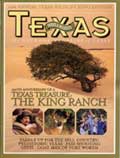
At Issue
From the pen of Robert L. Cook
The future of hunting is at issue. More than one million folks buy Texas hunting licenses annually. However, some Texans oppose hunting and would prefer that it not be allowed. On the other hand, most Texans neither oppose nor support hunting. They are OK with those who hunt and with hunting in general, even though they do not hunt themselves.
From a wildlife manager’s perspective, and from the perspective of a state conservation agency charged with establishing and enforcing hunting seasons and bag limits, being OK with hunting just isn’t good enough. Regulated, managed hunting is the single most effective and efficient management tool we have to insure the future of wildlife and natural landscapes in Texas.
Look at the facts: Huntable wildlife populations in Texas — especially white-tailed deer, turkey and dove — are in as good or better condition today than they have been in more than 100, maybe 150, years. It is not an accident that these species that are hunted are in great shape.
More than half a century ago, Aldo Leopold, the father of modern wildlife management, wrote that wildlife “can be restored by the creative use of the same tools which have heretofore destroyed it — the axe, cow, plow, fire and the gun.” Several decades ago, using supporting research and technical guidance from the Texas Parks and Wildlife Department, land managers in Texas — primarily private landowners — began successfully practicing Leopold’s wildlife and habitat management tools on a widespread basis. With the axe, invading brush and exotic woody species are controlled. The use of deferred rotation cattle-grazing systems mimics the roaming bison herds that molded our natural landscape. By using their plows wisely, land managers have learned to leave shelterbelts, playas and critical pieces of brushy habitat for wildlife. With prescribed burns, our grasslands and woodlands can be rejuvenated. With the gun, big game populations can remain in balance with habitat, with hunts and hunting leases generating the needed revenue to support the tract of land.
The results are clear. Through the use of regulated hunting — which includes the collection and analysis of population and harvest data, and the use of prescribed fire, deferred-rotation grazing and carefully planned brush control — we can significantly improve wildlife habitat and insure the long-term existence of both game and non-game species in Texas.
Hunting is not a right, as some folks assume or profess. Hunting is a privilege that all Texans, whether they hunt or not, should vigilantly protect and carefully respect. Most importantly, hunting is a wildlife and habitat conservation tool that has proven its worth and, I predict, will always be a part of our heritage.
I have said it before, and I’ll say it again: the Texas Parks and Wildlife Department is a hunting, fishing and outdoor recreation outfit, and there is no better state or federal natural resource conservation agency in North America.
So get outside, study and learn about wildlife, go hunting this season and remember that protecting hunting protects the great Texas outdoors for everyone.

